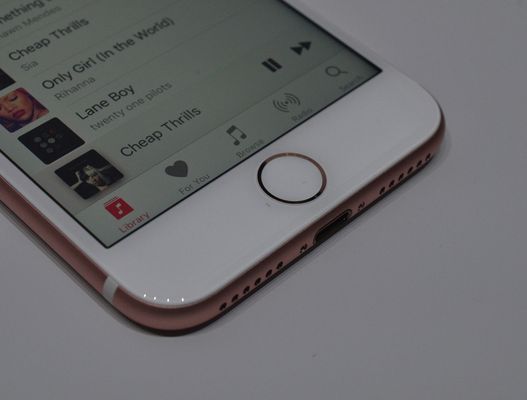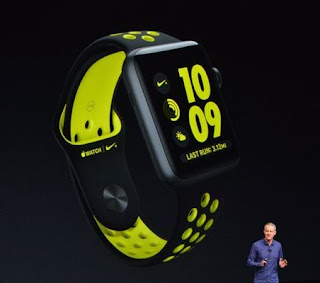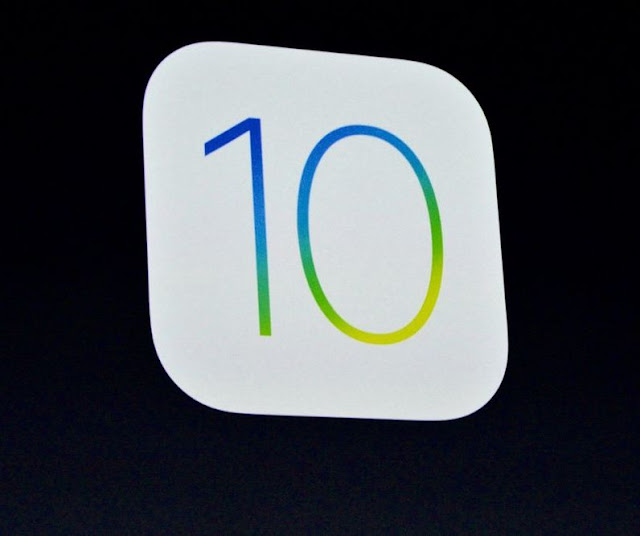
What really mattered at Apple's iPhone 7 event (Mario, of course)
Though widely anticipated as a rather boring update to the iPhone, Apple's September 2016 announcement event actually revealed some nice, if not unexpected, products. It started with James Corden driving Tim Cook to the event as part of Carpool Karaoke. Turns out some episodes of the show will premiere on Apple Music next year. (Corden hosts "The Late Late Show" on CBS
Apple's iPhone 7 is a familiar phone for unfamiliar challenges
Apple's AirPods may look weird, but they'll change the headphone market
Full coverage of Apple's event
The new version of its mobile operating systems announced at WWDC in June will be gradually rolling out to devices. Its phone and tablet OS, iOS 10, will be available starting September 13, as will the new Apple watch operating system, WatchOS 3. Here's what we knew about both new Apple OSes before Tim Cook even took the stage on Tuesday.
As usual, we were treated to all the big numbers: 17 million paid Apple Music subscribers, 140 billion apps downloaded from the App Store and so on.
Nope, there’s no headphone jack in the iPhone 7. That’s what you’re wondering, right? It doesn’t have one.

If you’re still reading, some interesting other features showed up at the Apple event. The day was dedicated to upgraded versions of the iPhone and Apple Watch, both of which feature new colors, are safer around water, and will have a surprise from Nintendo onboard. The iPhone 7 lost a headphone jack but gained new wireless “AirPod” earbuds and a second camera. The Apple Watch Series 2 is now more effective than ever at guilting you into better lifestyle choices. Everything is more powerful. And if you were looking for new MacBooks, iPads, Apple TVs, or VR headsets — we can dream, right? — then you’ll have to wait until next time.
Apple’s first news of the event actually came from its Twitter feed, which announced the new iPhone 7 before it ever appeared on stage. On stage, Apple made much of the new design, with Jony Ive stressing that the device has been painstakingly perfected to be as clean and beautiful as possible, and on multiple occasions the new phone was called the best iPhone ever made. Obviously, we've heard this before. But that didn’t mean the phone's official unveiling wasn’t welcome.
Both the 4.7-inch iPhone 7 and 5.5-inch 7 Plus come in the usual array of colors, with the added additions of the super glossy Jet Black and the slightly more ordinary Black. They have a 25 percent brighter display, with a wider color gamut for better color management and reproduction. This time around, the antennas are built right into the chassis, getting rid of those ugly lines from the previous two versions of the phone. Internally, the new phones get stereo speakers and a brand new A10 Fusion chip. And, possibly most importantly, the devices are water- and dust-resistant. But we get it: you want to drill into the big changes. Take a look below.
Goodbye headset jack
This one change will represent a major test of the trust consumers have in the iPhone. Apple announced that, in removing the 3.5mm jack, the included headphones will work over Apple’s Lightning standard. That means you won’t be able to connect your favorite headphones to the next iPhone without an adapter (which will be included in the box, of course). Phil Schiller argued that Lightning is already an excellent audio standard, and that the team behind it is showing "courage" by making the shift. It’ll be a little while before we knew for sure if this was a good idea.
Hello wireless headphones
To make the transition away from analog audio easier (if more expensive), Apple developed its own standard to allow wireless headphones to connect to the new iPhones seamlessly. Using its own W1 chip, Apple designed AirPods — or EarPods without wires — that connect to the iPhone without needing to pair like you would with Bluetooth. Beats has also developed two new headphones running on the W1 chip. The AirPods will set users back $159, and they'll have to wait until late October to buy them. The new Beats headphones will also be out this fall, and range from $149 to $299.

A non-clicky Home button
One of the iPhone’s most constant, iconic features is gone: the clicky physical button at the bottom of the phone. In the iPhone 7, the Home button is still there, but it’s no longer mechanical. Instead, like Apple’s new MacBook trackpads, the iPhone will provide touch feedback with the Taptic Engine. It’s supposed to deliver similarly satisfying feedback, with custom notification buzzes for things like messages and calls. Will it actually be as satisfying? We’ve had good results on the Mac, but it’s hard to say for sure.

A new Mario for iOS
Pokémon Go isn't going to be Nintendo's only big mobile game this year. Super Mario Bros. creator Shigeru Miyamoto took the stage today to announce Super Mario Run — a new installment in Nintendo’s long-running series. It looks a lot like the 2D platformer we’re all familiar with, but it draws some mechanics from mobile endless runner games, and Miyamoto noted that you can play it one-handed on the subway. There’s also a multiplayer mode of sorts, where players compete to collect coins on a map. The game is coming out by the holidays, and at least for now, it’s only on iOS.

A double camera with some new tricks
The bigger version of the iPhone 7 comes with two rear-facing cameras, but it’s not going to let you capture your favorite moments in 3D. Instead, each camera has a different focal length, allowing for users to pick between shooting photos with a wide-angle or a telephoto lens. The iPhone 7 Plus will also be able to do some software tricks using those two different focal lengths. One is called "software zoom," where you’ll be able to "zoom" in the camera app between (and beyond) the two different focal lengths. The other is called "depth," and it uses the differences in the lenses to enhance the blur of the background behind your subject — similar to what phones like the recently released Honor 8 are capable of.
Now, that’s just the iPhone 7 Plus. The smaller, cheaper iPhone 7 only has the wide-angle camera, but it is at least getting some upgrades from the iPhone 6S shooter. There’s a new 12-megapixel sensor, a new flash, an f1.8 lens. It also comes with optical image stabilization, and Apple says that its new image processor will use machine learning to enable better autofocusing, exposure, and color-correction. Apple made a lot of bold claims about the new cameras on the iPhone 7S, and we can’t wait to put it all to the test.
The second generation of Apple Watch
After releasing its first smartwatch last year, Apple is back with what it calls the Apple Watch Series 2. It has all the requisite specs bumps: it has the brightest screen Apple’s ever shipped — supposedly twice as bright as the last Watch — and its new S2 chip has a dual-core processor that’s supposed to be 50 percent faster than its predecessor. On the outside, you’ve got the same square shape and side buttons, but it now comes in white ceramic along with aluminum and stainless steel. It also includes some snappy-looking new bands, including a custom design from Hermès, and there’s a Nike watch model that’s aimed specifically at guilting runners into regular exercise.
The Series 2 watches will start at $369, and just like Apple has done for iPhones and iPads, it’s keeping the original Watch around as a cheaper alternative. The Series One line, as it’s being called now, will be upgraded with the same S2 chip and sold for $269. Preorders will start September 9th, with the watches coming in late October. And watchOS 3, which was announced earlier this year, will be coming to current Watch owners on September 13th.


Serious waterproofing and GPS
The first Apple Watch was splash proof, but the new Series 2 Watch is water resistant up to 50m. That means it won’t just help with the occasional spill — in fact, Apple spent time on stage encouraging users to wear the Watch while they swim, and the company will ship swim-specific workout modes on Series 2. This change involved sealing off every possible point of entry except the watch’s speaker, which is supposedly designed in a way that will push water out.
But the new Watch isn’t just about swimmers. The new Apple Watch also has built-in GPS, which makes it much more runner- and hiker-friendly — it means the watch can still find your location if you're in a cellular dead zone. It still doesn’t have a standalone data connection, but the new Apple Watch sounds like it will be a more independent device than the first one ever was.

Pokémon Go for Apple Watch
Did you think Super Mario Run was the end of today’s Nintendo news? Nope — the company is also announcing an Apple Watch version of mobile game and social phenomenon Pokémon Go. Granted, there’s already a Pokémon Go wearable that will let you catch pokémon and visit pokéstops. And the Watch OS app is more about spotting pokémon than catching them; you’re clearly still supposed to be pulling out your phone from time to time.
But the app gives wearers visual feedback that Nintendo’s simple watchband can’t. And it makes Pokémon Go’s egg-hatching feature, which encourages players to go out for walks, more convenient and accurate. Hopefully, there’ll be no more strolling around awkwardly with your phone in hand — at least when the app launches later this year.

iOS 10 is coming out next week
iOS 10 is officially coming out on September 13th, bringing the next major iOS update to users after spending the summer in beta. This release represents one of the biggest iOS has ever seen. It means particularly big things for Siri, which has gotten smart enough to handle image searches and handle transcribing voicemails. But iOS 10 shows Apple becoming much more open, with Siri and iMessage now opening up to developers. Users will also see more widgets and better notifications, and Apple has extended Continuity to include Universal Clipboard, which lets you copy text and images on your phone and paste them on your Mac.

macOS Sierra comes out September 20th
While it didn’t make an appearance at today’s keynote, macOS’s next update, Sierra, will officially launch on September 20th. With that release, the old OS X nomenclature will finally be put to rest. Of course, that’s not the biggest change to come. With Sierra, Siri will come to the Mac, letting you access things like files and email with voice commands. Even more important: the combination of a more mature iCloud and improved Continuity means storing files and moving work back and forth between your Mac and iPhone could be easier and better than ever — in theory, at least.



















































